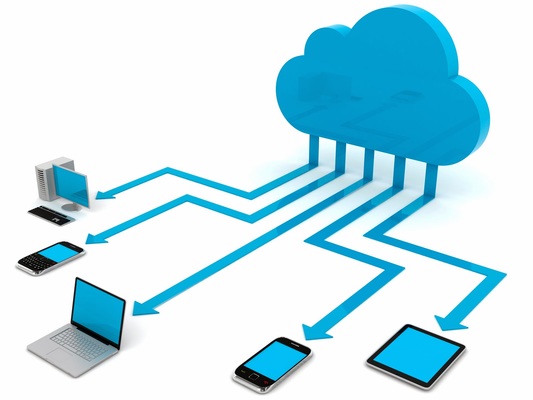ERP News – worldwide – erpnews.com – Whether you’re considering the transition to a new, formal ERP system altogether, moving from one ERP system to another, upgrading your ERP system, or migrating your existing system to the cloud, having the right tools – talent and technology – leading the charge will make a world of difference on your journey.

Yet it’s no small feat to hit the ground running with a successful ERP system and accompanying strategy to leverage operational data: it requires careful planning, resource and budget allocation, infrastructure utilization audits, all handled by assigning explicit ownership for the information and processes associated with the system’s use.
In fact, a 2015 Deloitte report cites 10 common barriers to ERP implementation, with the top five concerns addressing issues related to change management: resistance to change, inadequate sponsorship, unrealistic expectations, poor project management and lacking a compelling case for change are flagged by CIOs everywhere as challenges – and opportunities – requiring leadership buy-in and methodical planning to stay on course toward successful implementation.
As leadership contemplates how to build the case to advance operations with top-of-the-line ERP offerings, technology continues to evolve – waiting for no one. The perks of moving to the cloud await, becoming increasingly apparent to more companies as adoption accelerates.
If moving to public cloud or hosted services seems intimidating by adding another factor into the mix amid or replacing on-premise infrastructure, a paradigm shift is in order – necessary to stay competitive and lean in a world shifting to accommodate more outsourced options and the agility found in the cloud.
Complicating things further, those now making the move are presented with options – options that improve the quality of cloud overall, but create an initial dilemma as leaders oscillate between service providers and products, debating which areas of their business to migrate when and where.
Meanwhile, more and more applications build upon on another within increasingly complex and intricately interdependent environments. And with software contenders such as SAP Basis, Oracle E-Business Suite and PeopleSoft on the human capital side of things, the review process across vendors can be rigorous, requiring IT savvy to make sure what you end up with will be the best match for your company – present and future.
Wondering where to start? Consider these criteria, remembering to adopt C-L-O-U-D:
Consider stakeholders directly and indirectly affected by the change.
It is important to acknowledge how team members and suppliers will interact with new tools available to them; it is equally important to think about how investors, customers and employees outside of operations can capitalize upon ERP solutions in the cloud.
How can those indirectly affected see the advantages? Communicate early and often about the technology adoption as well as new approaches to process and data: reinforcement through repetition will help with day-to-day adoption and increase support, signaling company health from the investment in new systems.
Leverage custom capabilities as options to enhance your ERP offering.
Assigning weighted value to additional capabilities based on your company’s greatest needs and vertical industry demands will help you make a decision that feels right, while equipping your team with new functionality such as context-specific analytics, mobile enablement, customizable dashboards, invoice scanning, collaboration tools and automation.
If you’re a company with a geographically dispersed supply chain or sales team, the value of mobile data entry or geolocation tabs will be the gift that keeps on giving, once your team members can reap the benefits for themselves.
Outline processes easiest to migrate, favoring those with uneven impact on infrastructure costs.
Prioritize moving processes with fluctuating usage throughout the month, making the perks of ERP cloud adoption evident even sooner. Activities such as end-of-month timesheet entries or seasonal order intakes can result in major reductions in infrastructure costs without compromising process performance.
Understand the user experience as a key factor for decision-making.
User experience is paramount to success by ensuring that platforms, once implemented, are consistently tapped and properly maneuvered. Systems must be intuitive for a business-user to navigate, with self-service options to empower users to experiment with their options for better insights discovered autonomously. When ranking your processes for cloud migration consideration, assess number of occasional users, potential impact to data quality (if improperly used) and steps toward process adoption as a foundation for usability score.
Deliver on the promise of digitization.
With a real understanding of end-to-end processes and how ERP systems will transform your business, you can make the case for an implementation while communicating the value of what outcomes will take shape based on your knowledge of the long-term benefits of such systems. As a step on your company’s digitization journey, implementing a cloud-based ERP should be done with an end-goal in mind toward time to ROI and reduced TCO.
Having these goals in mind will help keep your company focused as users get acclimated and new processes are incorporated, becoming the new “business as usual.” By pinpointing processes you’d like to advance, reports and assessments you’d like to improve, and overarching business insights you’d like to more consistently tap, you’ll be able to paint a rich picture of how an ERP system will improve the work lives of many stakeholders across the company – from junior analyst to CEO – creating buy-in and a roadmap for success in the long run.
As your company grows, it’ll be poised to better scale with end-to-end digitization already at the heart of your operations. Not only will a move to the cloud add functionality at your fingertips, it’ll lower costs to free up budgets for entirely new – and innovative – purposes, making better use of your company’s assets across the board.
Mission (Nearly) Accomplished
An investment today in your infrastructure needs of the future is a positive one, as long as you’re smart about your options now and the level of flexibility needed to make adjustments later. Having trusted advisors on hand to help you manage your IT infrastructure and ERP software helps alleviate the concern that you’ll be blindsided by developments that will alter your current system – because change is inevitable, it should be welcomed. With the right team and expertise at the helm, change can be embraced rather than feared.
With these tips in mind, consider yourself one step closer to reaching – and exceeding – your operational goals, all while establishing consensus and creating stakeholder buy-in during the implementation and once on board: mission accomplished.


